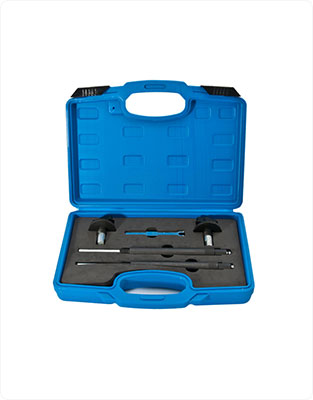When it comes to driving comfort, a well-functioning air conditioning system is essential. Automotive AC tools play a crucial role in ensuring the optimal performance of the AC system. But have you ever wondered how these tools detect wind speed? In this blog, we will delve into the fascinating process of how automotive AC tools measure wind speed and the importance of this feature for a comfortable driving experience.
What are Automotive AC Tools?
Before we dive into the intricacies of how automotive AC tools detect wind speed, let's briefly discuss what these tools are. Automotive AC tools are specialized devices used by mechanics and technicians to diagnose and repair issues related to the air conditioning system in vehicles. They help in servicing, testing, and troubleshooting automotive AC systems, ensuring their optimal functionality.
The Importance of Wind Speed Detection
Wind speed detection is a crucial feature of automotive AC tools. The ability to measure wind speed accurately allows technicians to diagnose problems related to the air conditioner's cooling efficiency. An inadequate wind speed could indicate a faulty fan, clogged ducts, or other issues that need attention. Identifying and addressing these problems promptly ensures that the AC system performs optimally, providing comfort to the vehicle occupants.
Components of Automotive AC Tools
To understand how wind speed is measured, let's take a closer look at the components of automotive AC tools. These tools generally consist of an anemometer, which is the primary instrument used to measure wind speed. An anemometer typically consists of a wind vane, a cup anemometer, and a hot-wire anemometer. The wind vane detects the direction of the airflow, while the cup anemometer and hot-wire anemometer measure the speed of the wind.
Detection Process
When an automotive AC tool is used to measure wind speed, the anemometer is placed in a location where it can sense the airflow within the vehicle. It could be positioned at the air vents or in the front grille. The anemometer captures the speed and direction of the air entering the system. This information is then relayed to the tool's display, providing technicians with real-time data.
Troubleshooting and Maintenance
Wind speed detection through automotive AC tools allows for effective troubleshooting and maintenance. Technicians can compare the measured wind speed with the manufacturer's specifications to determine if any adjustments or repairs are required. If the wind speed is lower than the recommended range, they can identify and resolve the underlying issues promptly. Regular maintenance checks using AC tools help prevent potential problems before they escalate, ensuring the AC system operates at its best.
In conclusion, automotive AC tools are indispensable in diagnosing and maintaining the air conditioning system in vehicles. Wind speed detection is a crucial feature of these tools, enabling technicians to identify and resolve issues related to cooling efficiency promptly. By using specialized anemometers, these tools accurately measure wind speed, ensuring a comfortable driving experience for vehicle occupants. Regular maintenance checks using automotive AC tools play a vital role in keeping the AC system running efficiently. So, the next time you enjoy a comfortable ride in your car, remember the role of these remarkable tools working behind the scenes to ensure your driving pleasure.
 EN
EN


















